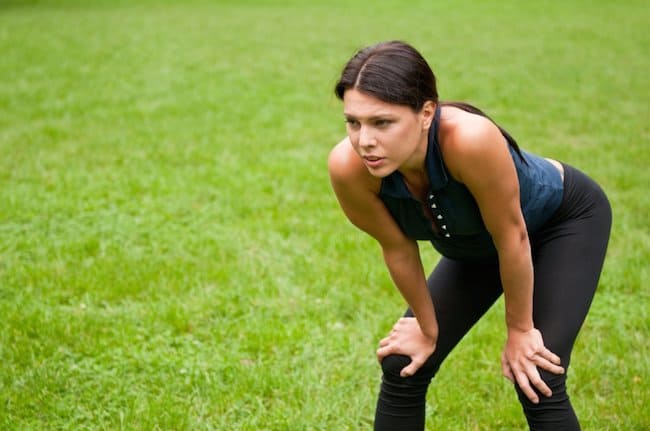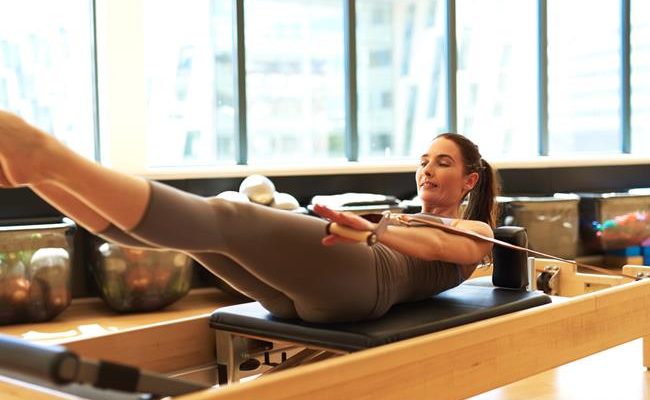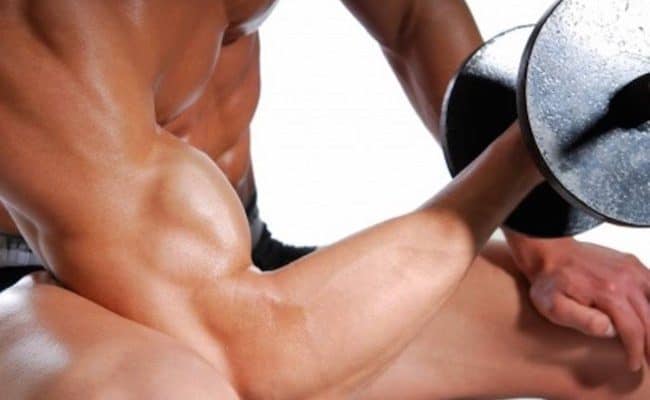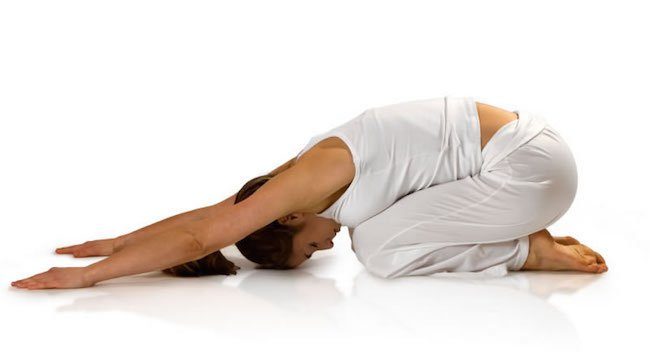
The actual breathing technique employed during exercise can be both important and confusing. If you have been through a Pilates class you were probably been taught to breathe in a specific way, if you then go to yoga you are told to forget what you know and breathe in a different way and if you try lifting weights there is a whole different breathing world there.
Breathing is something so simple and an everyday function which we do without even thinking about; who would have thought that it can actually be a major mission? So should you be mastering the one breathing technique which is correct and will it enhance your performance and exercise abilities? I wouldn’t go that far and as I like to say, it is a lot more complicated than ‘one fits them all’.
Remember to breath
When I was training to be a Pilates instructor the one thing we learned about breathing was to actually breathe. Put your hand up if you have been half way through a workout and started looking borderline red-blue in color from holding your breath.
That is probably a very familiar picture and ‘Yes’ we all have and do get there some times.
So first step in the correct breathing technique is, don’t hold your breath.
Easily done as with increased exertion we tend to hold our breath and only resume when the exercise(s) has finished. That undoubtedly is far from good for you.
You do need the oxygen for your exercising muscles, heart and body. Holding your breath is likely to make you feel tired easier and in extremes to actually pass out.
Most instructors learn to remind exercise participants to breathe, which is great, as I do believe there would be a lot more people passing out half way through exercise classes.
Nose versus mouth
A typical breathing pattern at rest will involve breathing in and out from the nose. With some exceptions off course in which people breathe in a combination between nose and mount or just mouth. This could be due to various individual characteristics, breathing conditions, obstructions etc.
During exercise however, this pattern changes and there is a point at which we tend to switch to nasal breathing. Some studies will call that the ‘oronasal switching point’.
Why is all that important? Well the nose plays an important role in filtering the air we breathe in terms of removing harmful particles and gasses such as ozone.
Moreover, the role of the nose is to moisturize and warm the air passing. The more air breathed from the mouth during exercise the more likely to inhale unwanted particles and be less protected.
With that in mind breathing in from the nose and out from the mouth is highly recommended. It is quite hard as the more strenuous the exercise the more likely to switch to mouth breathing, but like everything else if practice consciously and in low intensity exercise it can soon become a habit.
Diaphragmatic breathing
Diaphragmatic breathing (or tummy breathing as it may be referred to) is popular with actors and singers and also with yoga. Ok singing may not be exercise related as such but the aim behind breathing from your tummy is increase the capacity of the lungs.
The diaphragm is a muscle which lies across underneath the rib cage and it is mainly involved in breathing. The diaphragm will contract and relax accordingly to facilitate inhalation and exhalation. Using the diaphragm to breathe tends to result in breathing more deeply and using more of the lungs’ capacity and therefore taking in more air and thus more oxygen.
Some studies suggest that diaphragmatic breathing is beneficial for running. More specifically they advocate that those who breathe utilizing the diaphragm show a slower and less fatigue of the legs.
This can be the making of breaking in sustaining a long race or even just simply enjoying a run.
There are numerous breathing exercises which can help in training and improving diaphragmatic breathing. The hardest part is to learn to breathe in a particular way without having to think about it but practice does make better.
A very easy way to practice diaphragmatic breathing: place your hands on your tummy just underneath the ribcage and feel your tummy expanding as you inhale and deflate as you exhale. Be aware of your shoulders. If they are going up and down then you are using your chest rather than your tummy. Practice a few deep breaths slowly.
Don’t overdo it (no more than 4 breaths) as you will start feeling dizzy. Rest and try it at some later point through the day. Some suggest taking steps and coordinating these with inhaling and exhaling. What works best depends on the individual learning preferences.
Breathing for weight lifting
Should you be employing a specific breathing technique for weight lifting? Yes and no. The norm is breathing in (inhaling) when lifting the weight and breathing out when lowering. Some say during concentric and eccentric phase but overall it’s the same principle.
To be honest there isn’t much research (to my knowledge) which has shown massive difference for either inhaling or exhaling during concentric phase in weight lifting. There are a few different techniques which have been developed one of which is the Valsava technique.
In short and simple the Valsava technique is based on the principle of creating core stability when lifting weights. I will not go into deep about it but its main principle is that you inhale hold your breath and tighten your abdominals and then lift. This is a very simplified explanation and by far how it should be performed. I personally do not have experience of performing or using it so I could not describe it at its best.
In the short of it however, this is meant to create spinal and abdominal stability and thus be safer when lifting especially if weight is excessive. Not recommended if you suffer from high blood pressure as it can increase the pressure. Also it is best practiced with someone who knows it well like fitness professional and do avoid DIY gym advice or reading it from articles. Last thing you want is find yourself blue in the face and on the floor with an Olympic bar over your chest.
So if you are a beginner stick to breathing and not holding your breath, do not lift weights you can’t handle and do not perform fancy techniques of any kind so you can show off in the gym.
Some will recommend exhaling while lifting inhaling while lowering. The principle behind it is that people tend to be able to lift more when exhaling. Again studies haven’t shown anything in particular but it may be recommended for those who suffer from high blood pressure. Again it’s personal preference and as long as you are breathing and have stability is a good way to go.
Coordinated breathing
Some studies have looked into coordinating limb movement with breathing during cycling and running. Coordination of limp movement seems to naturally occur with running rather than cycling, possibly due to running being a very efficient form of exercise.
However, does coordination increase efficiency? Although it may be naturally occurring to some degree it does not necessarily result in efficiency or increase in performance.
The contrary, a decrease in performance was seen in some of the studies. The rhythmic effect of coordinated breathing with movement seemed to promote relaxation and in return decreased performance. So depending on the effect desired, maybe if you are going for a run to distress try coordinating movement with breathing. If you need to run a race maybe not recommended.
Conclusion
Breathing during exercise is the first and most important step to master rather than mastering a technique and forget to breathe. If you do suffer from any conditions which can affect breathing or your lungs best advise your doctor/physician or any appropriate professional as they could give you correct guidance.
Make breathing deep rather than shallow but don’t overdo the deep breathing as you will faint.











Dan says
Really interesting article on an important topic that rarely seems to get much attention. I’ve started focussing more on my breathing during weight training just recently and find that the most effective breathing pattern for me will actually vary between exercises. Inhaling deeply when lowering the weight on a bench press opens up my chest, increasing the tension built up across up upper body which helps me to lift much more weight.
Deadlifts on the other hand feel much stronger when using a method that seems similar to the Valsava technique and holding my breath and keeping my core tight until the top third of the lift. I’m looking forward to reading more of your articles in the future.